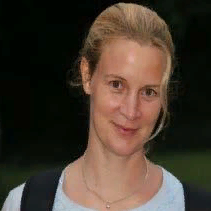
Katharina Kreppel
Work place: School of LISBE, Department of Global Health and Biomedical Sciences, Nelson Mandela African Institution of Science and Technology, P.O.Box 447, Arusha, Tanzania
E-mail:
Website:
Research Interests: Medical Informatics
Biography
Katharina Kreppel is the postdoctoral training coordinator for the Afrique One–ASPIRE programme at NM-AIST. Dr Kreppel holds a PhD in Epidemiology from the School of Veterinary Sciences, University of Liverpool, UK. Her research interest lie in One Health and understanding the ecology and behavior of tropical disease vectors and relate these to the epidemiology of diseases. She has a total of 10 years’ experience of field-based research in Africa on the effects of climate and the environment on vector ecology and disease epidemiology.
Author Articles
Desirable Dog-Rabies Control Methods in an Urban setting in Africa -a Mathematical Model
By Edwiga Kishinda Renald Dmitry Kuznetsov Katharina Kreppel
DOI: https://doi.org/10.5815/ijmsc.2020.01.05, Pub. Date: 8 Feb. 2020
Rabies is a fatal, zoonotic, viral disease that causes an acute inflammation of the brain in humans and other mammals. It is transmitted through contact with bodily fluids of infected mammals, usually via bites or scratches. In this paper, we formulate a deterministic model which measures the effects of different rabies control methods (mass-culling and vaccination of dogs) for urban areas near wildlife, using the Arusha region in Tanzania as an example. Values for various parameters were deduced from five years’ worth of survey data on Arusha’s dog population. Data included vaccination coverage, dog bites and rabies deaths recorded by a local non-governmental organization and the Ministry of Agriculture, Livestock Development and Fisheries of the United Republic of Tanzania. The basic reproduction number R_0 and effective reproduction number Re were computed and found to be 1.9 and 1.2 respectively. These imply that the disease is endemic in Arusha. The numerical simulation of the reproduction number shows that vaccination is the most appropriate control method for rabies transmission in urban areas near wildlife reservoirs. The disease free equilibrium ε_0 is also computed. If the effective reproduction number R_e is computed and found to be less than 1, it implies that it is globally asymptotically stable in the feasible region Φ. If R_e> 1 it is implied that there is one equilibrium point which is endemic and it is locally asymptotically stable.
[...] Read more.Other Articles
Subscribe to receive issue release notifications and newsletters from MECS Press journals